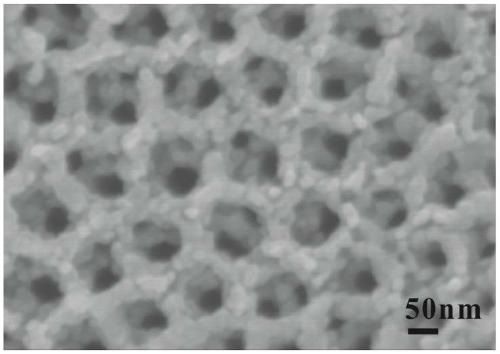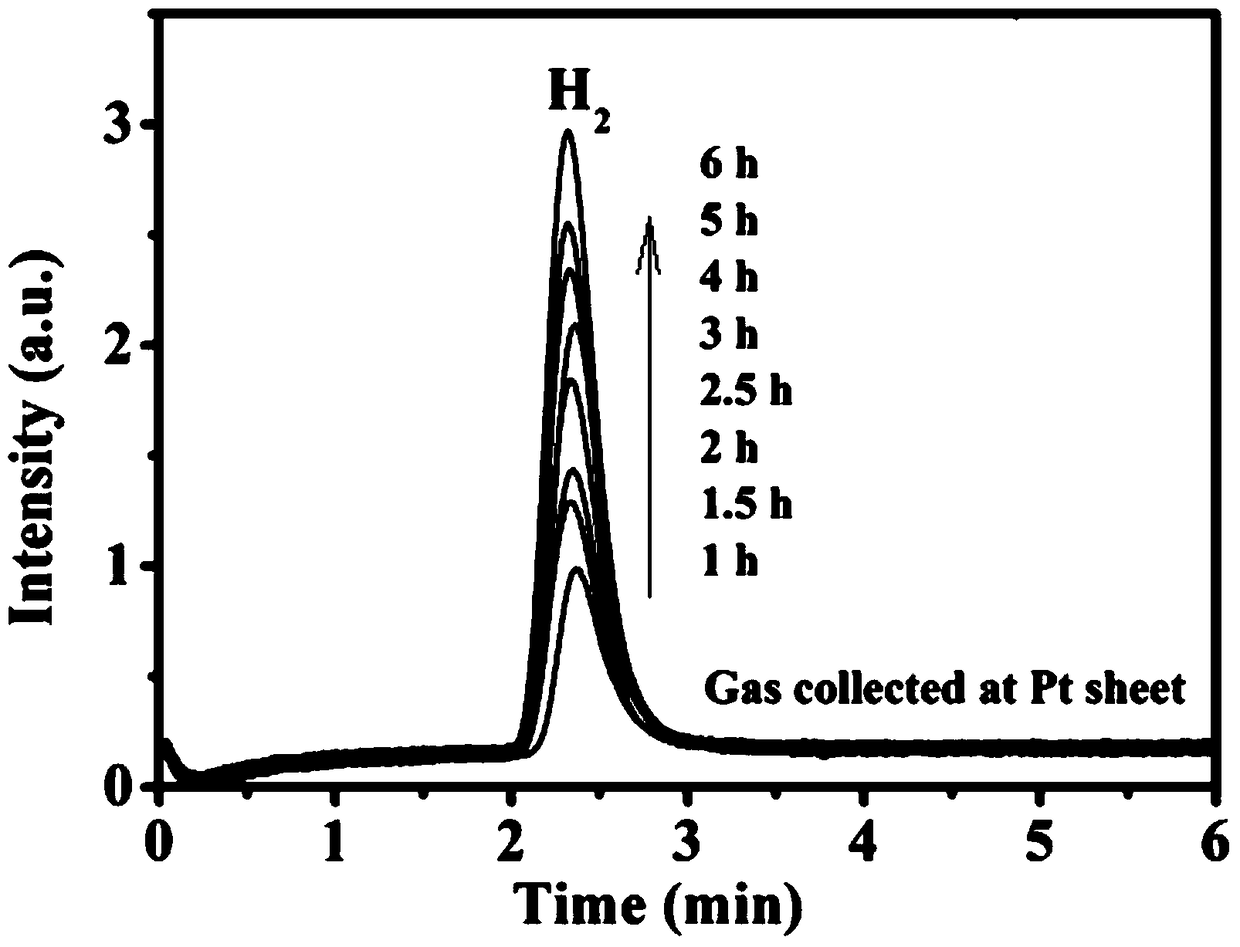Cu2O Quantum Dots Modified Titanium Dioxide Nanotube Photoelectrode and Its Preparation and Application
A technology of titanium dioxide and quantum dots, applied in the direction of electrodes, electrode shapes/types, electrolytic components, etc., can solve the problems of high recombination rate of photogenerated electrons and hole pairs, low photocatalytic activity, etc., to reduce energy consumption and increase stability Sexuality, increased absorption and transformation properties
- Summary
- Abstract
- Description
- Claims
- Application Information
AI Technical Summary
Problems solved by technology
Method used
Image
Examples
Embodiment 1
[0035] Cu 2 The preparation method of O quantum dot modified titanium dioxide nanotube photoelectrode comprises the following steps:
[0036] (1) The titanium plate was polished with 100#, 300# and 800# sandpaper in turn until its surface was smooth and flat; then it was ultrasonically cleaned for 10 min in double distilled water and ethanol solution, and then the surface was dried with nitrogen. At room temperature, in the traditional two-electrode system, the platinum sheet and the titanium sheet are used as the cathode and the anode respectively, the electrode spacing is 1cm, and the cell voltage is 60V for multi-step electrochemical anodization. The electrochemical anodizing electrolyte solution is: 0.3wt% NH 4 F and 2.0vol%H 2 O solution in ethylene glycol. After anodization, the anodized product was ultrasonically cleaned with double-distilled water for 1 min, and then the crystallized anodized product was calcined at 500 °C in an air atmosphere to prepare a periodic ...
Embodiment 2
[0039] Under room temperature conditions, the photoelectrochemical performance test was carried out on the CHI660c electrochemical workstation using the traditional three-electrode system, and the Cu prepared in Example 1 2 O quantum dots modified titanium dioxide nanotube photoelectrode was used as photoanode, saturated calomel electrode (SCE) and Pt sheet were used as reference electrode and counter electrode respectively, and 0.5mol / L KOH solution containing 0.1mol / L glucose was used as electrolyte. Ampere i-t curve test results show that Cu 2 O quantum dots modified titania nanotube heterostructure photoelectrode exhibited significantly increased photocurrent density value of 0.05mA / cm 2 . Compared with the oxidation photocurrent density value of pure water at its surface 0.02mA / cm 2 , the results further show that the biomass derivative glucose is more prone to oxidation reaction at the surface of the photoelectrode.
Embodiment 3
[0041] Equip self-made three-electrode reactor and vacuum air circuit in the sealed gas circulation system, with the Cu prepared in Example 1 2 The O quantum dot modified titanium dioxide nanotube photoelectrode was used as the photoanode, the platinum sheet was used as the cathode and the saturated calomel electrode (SCE) was used as the reference electrode. The electrolyte solution was: 0.5mol / L KOH electrolyte solution containing 0.1mol / L glucose. A 300W short-arc Xe lamp was equipped with a visible light filter as a visible light source and a -0.3V (vs. SCE) bias was applied to the Pt cathode. Finally, the collected gas was qualitatively and quantitatively determined by an online gas chromatography (GC) equipped with a thermal conductivity sensor (TCD). Such as figure 2 as shown ( figure 2 , the curves are 1h, 1.5h, 2h, 2.5h, 3h, 4h, 5h, and 6h from bottom to top), and the hydrogen production at the Pt cathode shows a gradually increasing trend with the increase of rea...
PUM
 Login to View More
Login to View More Abstract
Description
Claims
Application Information
 Login to View More
Login to View More - R&D
- Intellectual Property
- Life Sciences
- Materials
- Tech Scout
- Unparalleled Data Quality
- Higher Quality Content
- 60% Fewer Hallucinations
Browse by: Latest US Patents, China's latest patents, Technical Efficacy Thesaurus, Application Domain, Technology Topic, Popular Technical Reports.
© 2025 PatSnap. All rights reserved.Legal|Privacy policy|Modern Slavery Act Transparency Statement|Sitemap|About US| Contact US: help@patsnap.com


